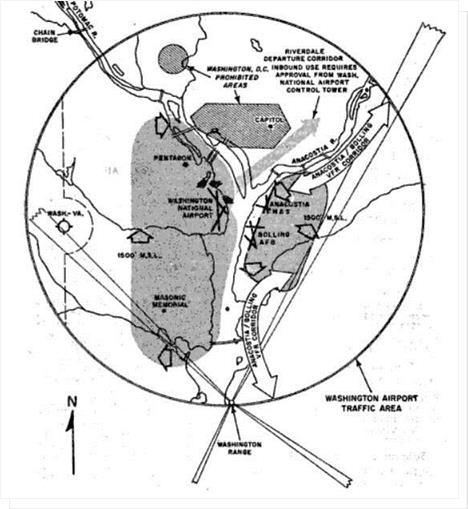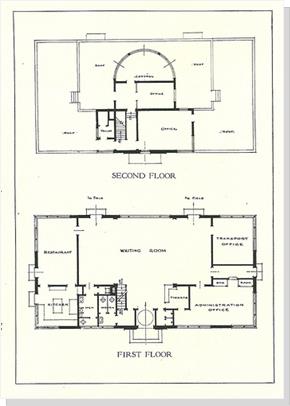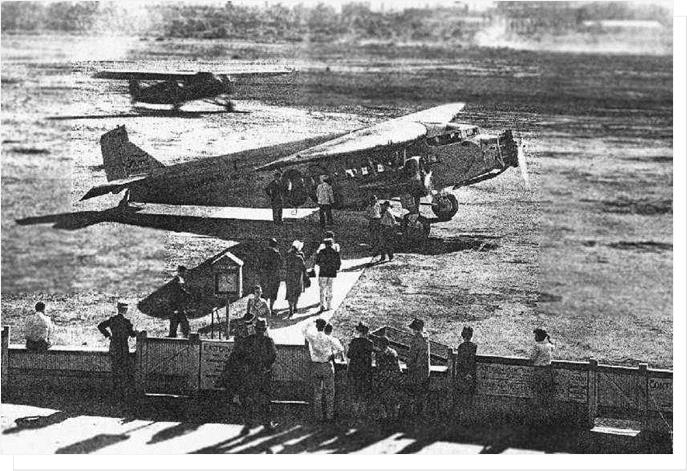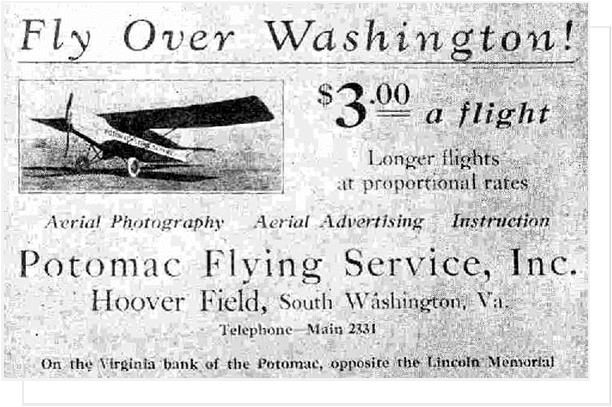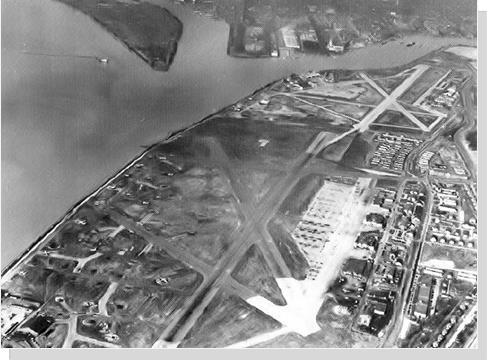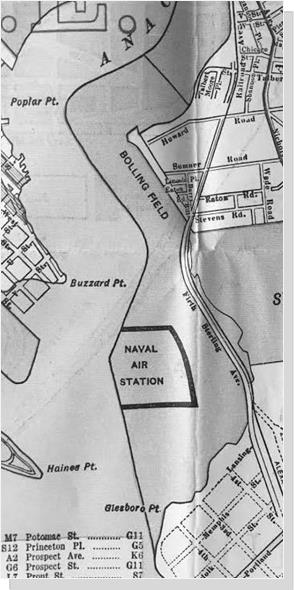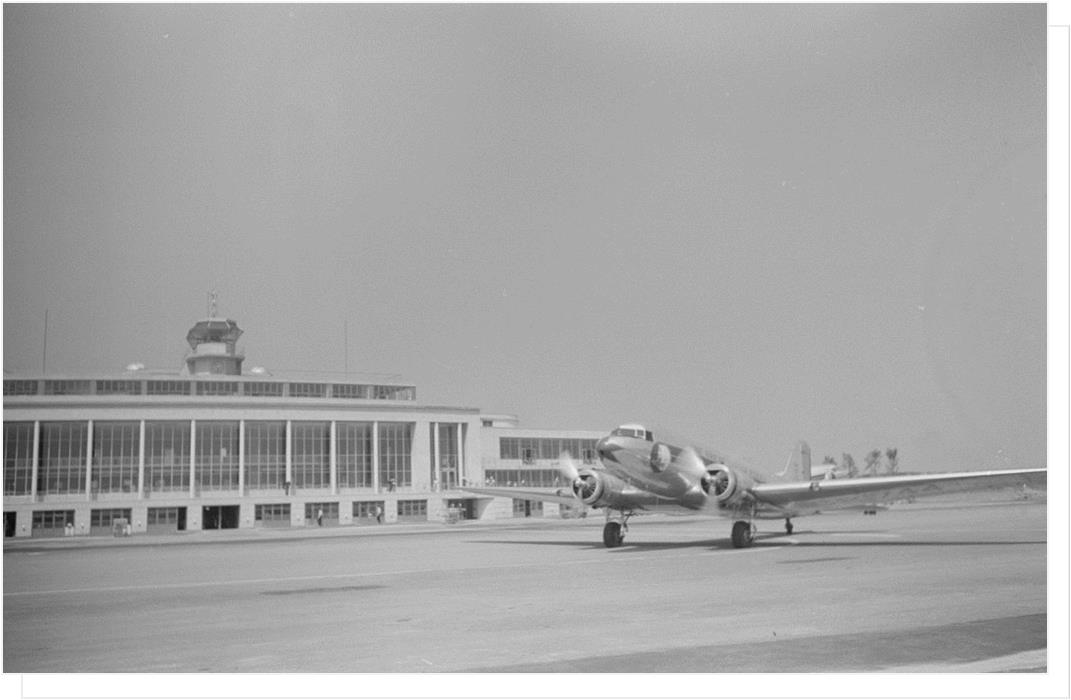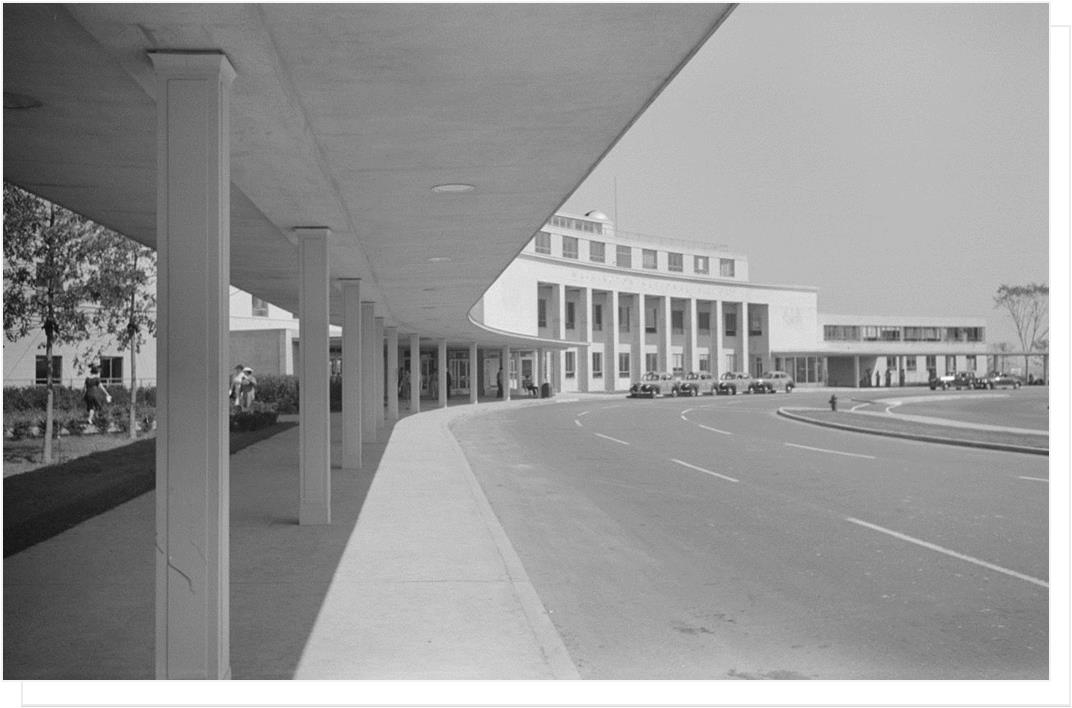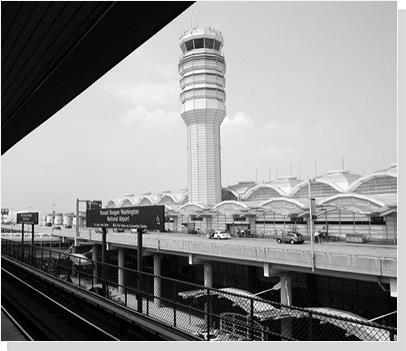
The History of Commercial Aviation in DC
Hoover Field, Washington Airport, and Washington National
By: M. Callahan
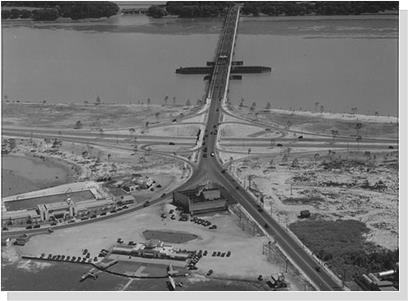 Commercial Aviation’s first home in the Washington area was Hoover Field located just west of the current intersection of the George Washington Parkway and the 14th Street Bridge. A private airfield, construction began in 1925, followed two years later with the construction of Washington Airport & Terminal along with their own runways, literally across the road from Hoover. Both airfields suffered from short and unpaved runways, numerous life-threatening obstructions around the field such as radio towners and a large Ferris wheel and high roller coaster at the Arlington Amusement Park, poor visibility (due to a burning garbage dump adjacent to each field), and poor drainage.
Commercial Aviation’s first home in the Washington area was Hoover Field located just west of the current intersection of the George Washington Parkway and the 14th Street Bridge. A private airfield, construction began in 1925, followed two years later with the construction of Washington Airport & Terminal along with their own runways, literally across the road from Hoover. Both airfields suffered from short and unpaved runways, numerous life-threatening obstructions around the field such as radio towners and a large Ferris wheel and high roller coaster at the Arlington Amusement Park, poor visibility (due to a burning garbage dump adjacent to each field), and poor drainage.
Washington Airport was dramatically enlarged (and the coastline of the Potomac River altered) in April 1928 when WA contracted to receive tens of thousands of cubic yards of earth, dug during the construction of the Federal Triangle complex of buildings in the District of Columbia. This dirt was used to fill in the sides and ends of the field. An airport office was also constructed at Military Road. The expansion and land reclamation increased the size of the airport six times. (1) The improvements at Washington Airport were so significant that in April 1932 the night airmail flight was transferred from Bolling Field (2) (located across the Potomac) to Washington Airport. A month later, in a continuing effort to improve safety, the airport paid local electric power and telephone companies to bury their lines obstructing the landing and take-off lanes. (3)
Washington Airport nearly went bankrupt in 1933, and was auctioned off to a new owner. The new owner also owned Hoover Field, and merged the two into a single airfield, Washington-Hoover Airport.
Hoover Field served as home to Luddington & American Airlines & occasional the Goodyear Blimp, a motorized billboard & tourist attraction was quite the rage at the time. A blimp hanger existed for visiting dirigibles during the 1930’s. Later this would also become home to Capitol Airlines, a local favorite.
The terminal at Hoover, completed in 1930, was designed by architects Holden, Stott & Hutchinson in the International Style for 50 cents per cubic foot or a total cost of $29,187.78. (As a point of comparison, the average annual salary in the US was $1368, or $26.30 per week.) The frame structure displayed stucco walls and a brick veneer base, was comfortable & dry, with a restaurant & restrooms contained within 58,000 cubic feet.
With passengers comfort secured, more airlines and flight routes emerged. As many as fifty sightseeing and thirty commercial flights operated initially each day. First Luddington Airlines (later part of Eastern Airlines) opened at Washington Airport with flights to New York, via Philadelphia ten times each day. A year after opening Hoover-Washington Airport advertised that seventy scheduled arrivals and departures were being made, making this enterprise the busiest airport in the US.
By late October in 1935, direct service between Washington and Chicago began with American Airlines on Douglas equipment. The entire flight took four hours with stops in Cincinnati and Indianapolis. These flights were famous for stewardesses in attendance, the only flight route to enjoy the luxury.
Toward the end of the decade, the government listened to the rumblings in Europe and feared it would not be long before the United States would once again be engaged in European Battle. An airport that provided flights for Congress, Leaders of Industry, Military, and all those needed in consultation for war work, was going to be required, and soon.
On July 16th, 1941, National Airport opened with half the runways devoted to military/government flights, and the other half to civilian. A small Army installation for the Air Transport Command and a medical clinic were built separate from the main terminal. Once National was opened and operational, Hoover-Washington Airport was razed. The grounds were purchased by the War Department for $1 million to construct the pentagon.
(1) Whitman, LeRoy. "Flying and Fliers." Washington Post. April 8, 1928.
(2) Mitchell, Ewing Y. "Plans to Give City Suitable Field Delayed." Washington Post. August 27, 1933.
(3) Buried Power Lines at Airport Upheld." Washington Post. May 4, 1932.
Reproduction and distribution of this article or photographs requires the written permission of the ENDEAVOR news magazine and the author. Some photographs courtesy of Wikipedia, the Library of Congress, The National Archives & Private Collections, with right of use reserved. (Copyright © 2012 Annandale Chamber of Commerce. All rights reserved. (Photographs & images, on this page, and on this website, are not available for use by other publications, blogs, individuals, websites, or social media sites.)
Copyright 2012 Annandale Chamber of Commerce. All rights reserved. Privacy Policy

